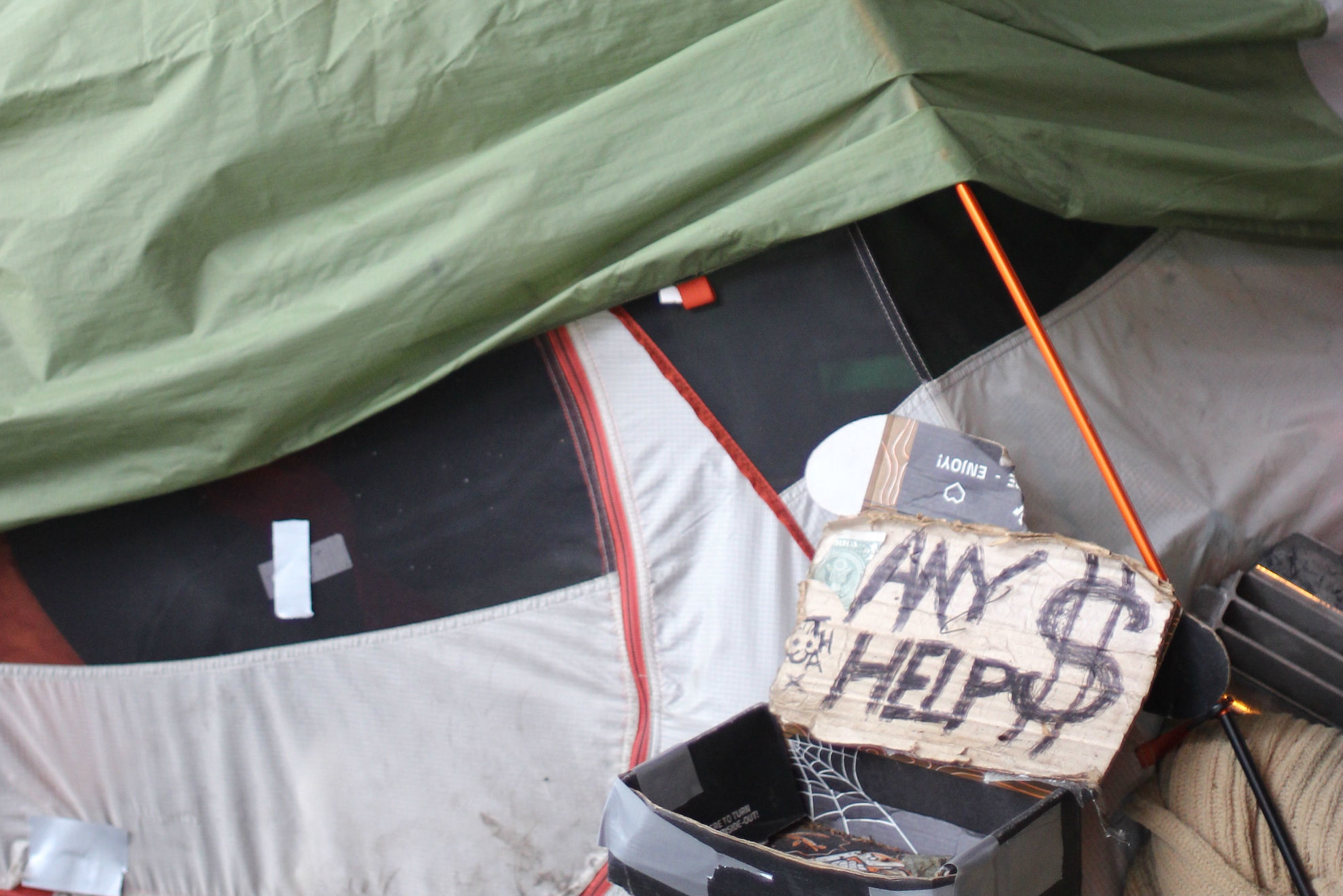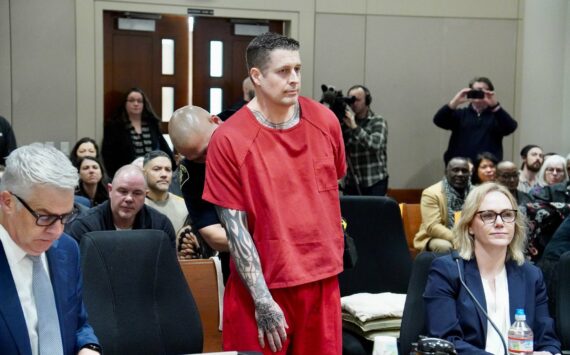This story was produced by Crosscut as part of the Homeless in Seattle media blitz.
On November 2, citing the thousands of people sleeping in the streets, 45 of whom died in 2015 alone, Seattle Mayor Ed Murray and King County Executive Dow Constantine declared a state of emergency around the issue of homelessness. The move gave them sweeping executive powers and occasion to free up millions of dollars to combat the problem. Murray has used the powers afforded him under the declaration to establish sanctioned homeless encampments and a parking lot for people who live in their cars, both of which normally require more vetting through the city’s land-use and zoning channels.
And to date, local governments have committed $6 million of $7.3 million in one-time emergency funding to the fight. According to the most recent report from the Seattle Human Services Department, the city has added 377 new beds to local shelters and made nearly 500 outreach visits to homeless encampments. “We’re seeing more people being served because of these dollars that weren’t being served before,” says Emily Nolan, project manager for HSD.
The mayor’s office says the state of emergency is ongoing, and does not have a fixed end date. But to most Seattleites, the streets remain crowded. And a look behind the scenes reveals that the city’s outreach efforts have run up against some harsh realities. To start, data collection on outreach is a challenge, a point HSD concedes. Therefore, measuring impact is also a challenge. Between January 1 and June 17, more than 1,000 people have been contacted through outreach visits, but fewer than 100 accepted referrals to shelters or sanctioned homeless encampments—and of those, outreach workers didn’t necessarily walk them to the door.
Of the people approached, 461 were ineligible for shelter, including 93 due to substance use and 79 for issues related to mental health. Others cited having too many belongings or because they lived with family or pets. (Most shelters segregate people by sex, and few allow animals.) Seven hundred and seventy-two declined the offer of shelter because they’d had negative experiences with the shelter system, becasue they preferred to stick with friends or family, or due to privacy concerns.
“It’s cleaner out here,” explains Abdul Toumbo, a homeless veteran sitting on a cooler near Eighth Avenue and King Street near the tent where he has lived for roughly a year. “There aren’t any bedbugs … I can’t be around a lot of people, especially a lot of people that have mental issues too,” he adds, admitting that he has struggled with drug addiction. “I just can’t deal with the bickering and the stealing.”
Toumbo has connected with REACH, an outreach and case-management service that has received more support from the city under the state of emergency. He also says he’s been seeing more teams lately, and REACH is working with him to find permanent housing. But in a larger sense, Toumbo demonstrates the city’s need to address the underlying causes of homelessness—especially drug rehab, including his own—and how those needs will remain unaddressed by the city’s emergency efforts. While HSD does fund systemic work out of its normal operating budget, the emergency funding is largely dedicated to acute need.
From the beginning, Murray has said the city can’t solve these problems alone. Since the emergency declaration, President Obama has promised to add $1 billion to his next budget to fight the opioid epidemic, and another $5.5 billion in homeless assistance. The state legislature increased funding for homeless services last session, although far less than many had hoped. It’s progress, but there are still enormous gaps. And there is more Murray could do, if he so chose. By declaring a state of emergency, the mayor takes the reins of the police department. He won’t, but he could also theoretically call curfews, close businesses, shut off utilities, and ban the sale and possession of firearms in the city.
“I wish he was using more of the [emergency] order,” says former City Council member Nick Licata. As an example, he points to the mayor’s recent move to establish a 24-hour one-stop shop for the homeless—a replica of San Francisco’s Navigation Center. The mayor will issue a request for proposal (RFP), which is required under normal circumstances to give contractors an equal shot at getting the contract.
Licata says skip it. “Bring one or two people up from San Francisco … and get something up and running within two months,” he says. (Murray’s office rejected the idea in an e-mail, saying that circumventing the RFP process would deprive the city of options to choose from when designing a project.)
The declaration has sent the city into uncharted territory. When states of emergency were declared after the 2001 Nisqually earthquake and the 1999 WTO protests, they addressed acute needs with clear goals and end dates. Homelessness has proven more complex.
In January, two months after the emergency declaration, volunteers counted over 4,500 people living on the streets of King County, nearly 3,000 of them in Seattle. Already in 2016, 25 homeless people have died in King County, according to the Homelessness Remembrance Project, a network of homeless people. That’s more than all the homicides Seattle sees in a year.
All this puts Murray and the City Council in an awkward position. The mayor is using his executive powers only sparingly, to limited effect—yet ending the state of emergency would imply that the emergency has ended. Clearly, it hasn’t.




